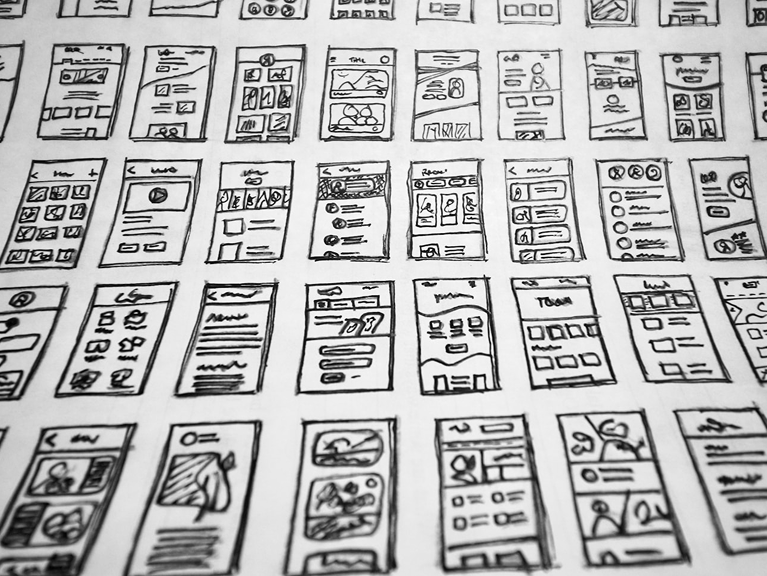Introduction
In today’s competitive digital landscape, having a beautiful website is no longer enough. It needs to be functional, intuitive, and optimized for both users and search engines. This is where UX (User Experience) meets SEO (Search Engine Optimization)—two traditionally separate disciplines that now must work hand-in-hand.
Most marketers optimize for traffic. But what happens when users land on your site and leave within seconds? High bounce rates. Low conversions. Missed opportunities.
A well-executed UX-driven SEO strategy can change that. By aligning design and content structure with search intent and usability, you’ll not only bring in the right traffic—but keep it.
This blog breaks down how UX and SEO support each other and how you can implement a combined strategy that leads to measurable growth.

Why UX Matters in SEO
Google’s algorithm has evolved to care deeply about user satisfaction signals. Metrics like time on site, pages per session, bounce rate, and Core Web Vitals have become part of the ranking equation.
1. Mobile Friendliness
- Over 60% of global searches happen on mobile.
- If your site isn’t responsive or touch-friendly, users will leave—and Google notices.
2. Site Speed
- A slow-loading site frustrates users.
- Studies show that a 1-second delay in page load can reduce conversions by 7%.
- Google includes page speed as a ranking factor.
3. Navigation & Structure
- Confusing menus and poor hierarchy can prevent both users and crawlers from finding your content.
- This weakens SEO authority and increases bounce.
4. Content Readability
- Dense, jargon-heavy content with poor formatting discourages reading.
- Good UX ensures content is easy to digest, well spaced, and skimmable.
5. Accessibility
- Accessible websites not only widen your audience but also perform better with search engines that favor well-structured, semantic HTML.

Step-by-Step UX + SEO Strategy
Here’s how to build an SEO strategy with UX at its core:
Step 1: Audit Your Current Website
- Use tools like Google Analytics, Hotjar, and SEMrush to understand user behavior and identify friction points.
- Look for patterns: Are users dropping off certain pages? Are key landing pages underperforming?
Step 2: Identify User Intent
- Every page should serve a purpose based on what the user is trying to accomplish.
- Align each page’s content and structure with specific search intent—navigational, informational, transactional.
Step 3: Wireframe UX-Optimized Layouts
- Before redesigning, sketch wireframes that prioritize clarity and flow.
- Use visual hierarchy, contrast, and whitespace to guide the user’s eye to what matters most.
Step 4: Optimize for Core Web Vitals
- LCP (Largest Contentful Paint): Load speed of main content.
- FID (First Input Delay): How quickly users can interact.
- CLS (Cumulative Layout Shift): Visual stability.
- Tools: PageSpeed Insights, Lighthouse, WebPageTest.
Step 5: Implement Content Best Practices
- Use clear H1–H3 tags and internal linking.
- Break up text with visuals, bullet points, and callouts.
- Add FAQs and structured data (schema) for better SEO.
Step 6: Continuous Testing & Feedback
- Run A/B tests to compare design variations.
- Use heatmaps and session recordings to observe real user behavior.
- Survey users for qualitative insights.

Case Study: 34% Drop in Bounce Rate
A mid-sized eCommerce client approached us with a common problem: “We’re getting traffic, but no one’s converting.”
Problems Identified:
- Homepage loaded in 6.8 seconds.
- Navigation had too many categories.
- Product pages lacked hierarchy and trust elements.
- The mobile experience was clunky.
Our UX-Driven SEO Solution:
- Reduced homepage size and scripts → load time improved to 2.4 seconds.
- Simplified navigation from 14 to 6 main categories.
- Added breadcrumbs, star ratings, and better CTA placement on product pages.
- Created separate landing pages for high-converting keyword clusters.
Results (within 90 days):
- Bounce rate dropped by 34%
- Average time on site increased by 51 seconds
- Revenue per session increased by 22%
- Organic visibility improved for 18 target keywords
Tools We Used to Align UX and SEO
- Figma: For prototyping user-centric layouts
- Hotjar: For tracking user interactions, rage clicks, scroll depth
- Google Analytics: To analyze bounce rate, time on page, exit rate
- PageSpeed Insights: To optimize Core Web Vitals
- SEMrush & Ahrefs: For keyword mapping and technical SEO audits
- Crazy Egg: For heatmaps and click tracking
- Google Tag Manager: For behavior tracking without dev involvement

Common UX Mistakes That Hurt SEO
❌ Walls of Text
- Large paragraphs without breaks discourage reading.
- Always chunk content and use subheadings.
❌ Slow Mobile Experience
- Ignoring mobile speed kills conversions.
- Compress images, defer JS, and use responsive design.
❌ Confusing Navigation
- Mega menus and over-nested categories cause choice paralysis.
- Keep it simple and intuitive.
❌ Missing Internal Links
- Internal linking helps both users and bots discover related content.
- A well-linked site keeps users engaged longer.
❌ Weak CTAs
- If the user doesn’t know what action to take, you’ve lost them.
- Use strong, clear CTAs with context.

Final Thoughts
SEO and UX are no longer siloed. To succeed today, marketers, designers, and developers must collaborate. Google’s algorithm favors websites that not only answer search intent but also deliver a seamless, satisfying experience.
By combining solid SEO strategy with thoughtful UX design, you not only attract the right traffic—you convert it.







